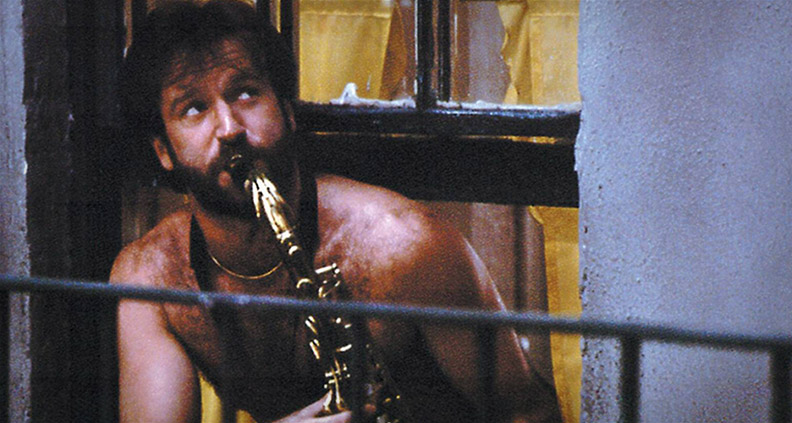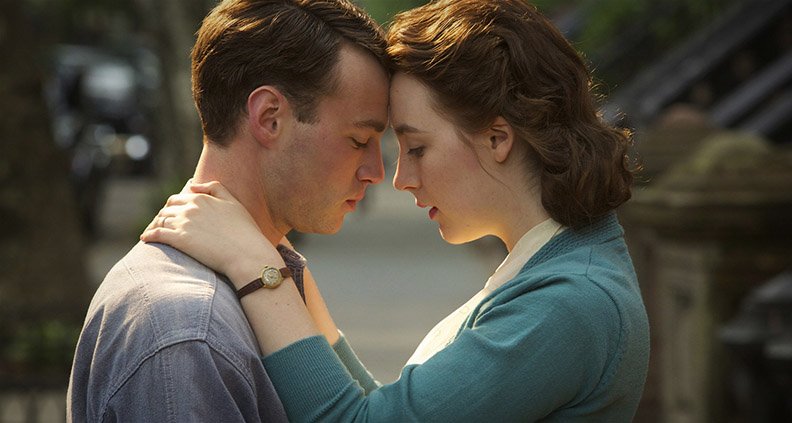2016 is likely to go down in history as the year the definition of “American” was most challenged. Who gets to be an American? Are Americans allowed to question their racist history? To what extent is the success of America attributable to immigrants? Must immigrants remain hyphenated Americans forever? What does American look like? As movie lovers, we naturally seek the answers to these questions in film—films that tackle these tough questions and make us feel empathetic, and even a little bit uncomfortable. Trying to find a classic Hollywood film that depicted the American experience I found that—with few exceptions—most were characterized by white males succeeding through capitalism (and then winning the girl). And while it’s sometimes hard to believe that the ‘80s are so far in the past, one underrated classic from that decade stood out as painting a uniquely cold yet beautiful truth about America: Moscow on the Hudson. Written and directed by Paul Mazursky, the 1984 film stars the late Robin Williams in a wonderful performance as a Russian who defects to New York City, eventually realizing that a beautiful dream doesn’t always (or often) mean a perfect one.
A modern counterpart is the highly acclaimed 2015 film Brooklyn, adapted by Nick Hornby from the novel of the same name by Colm Toibin and directed by John Crowley. Much like Moscow, Brooklyn is billed as a romantic drama, starring Saoirse Ronan and Emory Cohen. But the primary love story is the one between Ronan’s Eilis, a young shopgirl who emigrates from Ireland to the United States, and her adopted homeland.
Moscow on the Hudson is a beautiful combination of dramatic storylines and comic relief, blending together to tell a quirky immigrant tale. Robin Williams plays the saxophone-playing Vladimir Ivanoff, who makes the courageous decision to defect while in a Bloomingdale’s. It’s around this 40-minute mark that you begin to cry. (Okay, maybe that’s just me.) But the ear-to-ear smile and watery eyes that Williams carries with him conveys in a single moment so much about bravery, relief and the feeling of freedom. After this, Ivanoff becomes roommates with a black security guard, obtains a Cuban lawyer and falls for an Italian salesgirl played by a Venezuelan actress. It’s no wonder why New York is so often used to tell stories about the cultural collision—because that is exactly what you find in every corner. Vladimir soon learns the beauty of this freedom and the fact that he can coexist with people of such different skin tones and beliefs. He can also work at McDonald’s, buy himself a pair of Italian shoes and pay for a shabby apartment without the KGB watching his every move. But he also discovers that America doesn’t provide a blanket for heartbreak, job loss, burglary, or even the death of a loved one. The film portrays NYC as it is: a brutal, no-nonsense city where everyone you meet has a rich and often painful past, but they get on the subway like everyone else to make money and live their lives. This rocky relationship with a new city is similar to Ronan’s Eilis, whose sister arranges for her journey to Brooklyn in search of work, education and possibly an eligible bachelor. Neither Eilis nor Vladimir set out on their journey to the U.S. on their own: Eilis’s sister gives her the push, while Vladimir begs for stasis while his best friend tempts him with freedom. Once they make the leap of faith, though, everything changes. Eilis transforms from a shy girl with one dress and little to say into an elegant woman who excels in her studies and meets a charming young Italian plumber who slowly melts her heart. It’s a powerful transformation, made all the more clear when Eilis returns to Ireland to look after her mother following a sudden tragedy. Here, life finally hands her the work and love opportunities she yearned for before emigrating, and she’s forced to make a decision. In fact, both films eventually reach the point where the leads must acknowledge that home is still home: the place where family is, where people may be miserable, but where the misery is relished communally in a way that’s somehow comforting. Both Vladimir and Eilis ultimately decide that life, liberty and the pursuit of happiness (if not necessarily the reality of it) are worth fighting for and that finding love in a person from a different culture—ironically, Italian in both cases—isn’t as terrible as perhaps they were brought up to believe; that a good life can be attained because of the opportunity the U.S. provides for people to fail and get back up. The beautiful cherry on the top is that both protagonists, after their transformations, find peace in their hyphenated citizenship, each seeing themselves in the next wave of immigrants who are only just beginning their journey. And whether it is in 1950s Brooklyn, 1980s NYC or 2010s city of choice, it’s clear that the American journey is a fascinating cycle of new cultures and personal discoveries of what it means to coexist and be free. To learn more about Film Independent, subscribe to our YouTube channel or follow us on Twitter and Facebook. You can catch up with the rest of our blog here. To learn how to become a Member of Film Independent, just click here.

